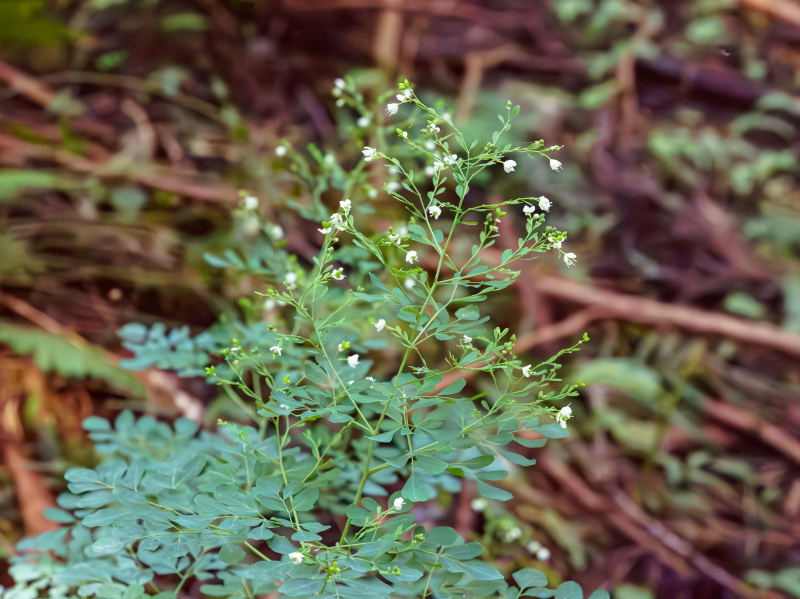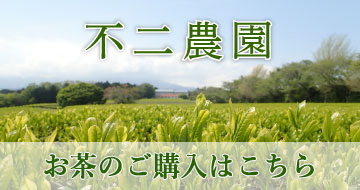フィールド日記
2024.11.15
ガマズミ
ガマズミが果実をつけています。丘陵から山地によく見られるガマズミ科の落葉低木です。赤い果実は食用にすることができます。
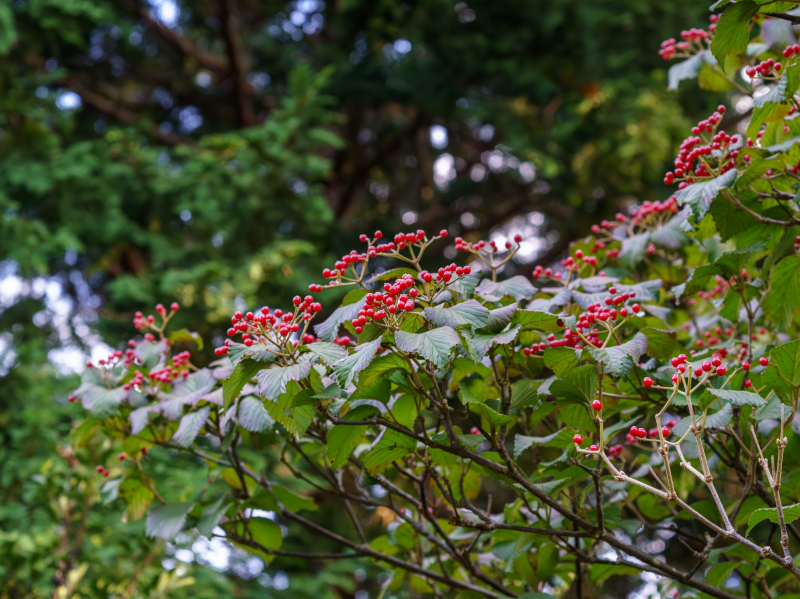
"Gamazumi (ガマズミ)" plants are bearing their fruits. They are the deciduous low trees of the Viburnaceae family that grow on hills to mountains. Their red fruits are edible.
2024.11.12
ハダカホオズキ
ハダカホオズキが果実をつけています。林縁などに生えるナス科の多年草です。光沢のある赤い実が特徴です。和名は、同じナス科のホオズキの実ががくに包まれているのに対して、本種は包まれていないことに由来します。
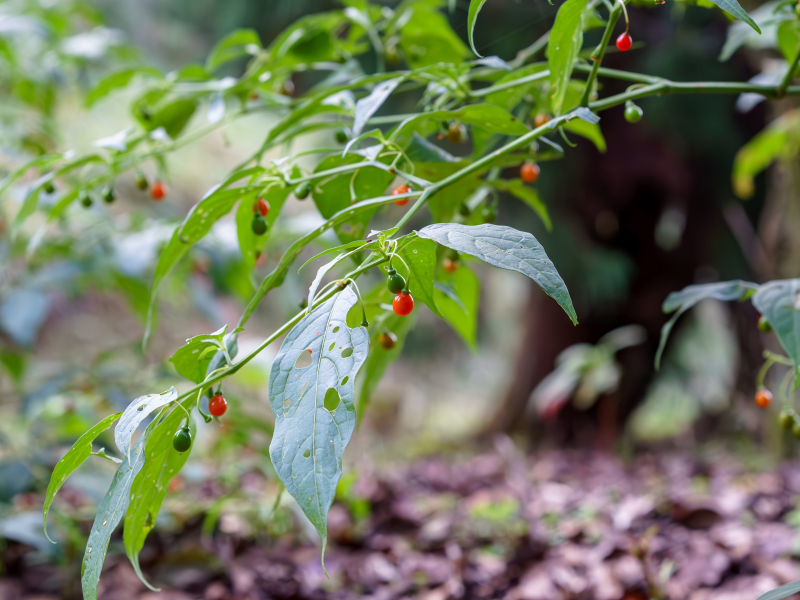
2024.11.08
ノコンギク
ノコンギクが咲いています。明るい林縁などに生える代表的な野菊です。和名は野に咲く紺色の菊という意味ですが、白色のものもあります。
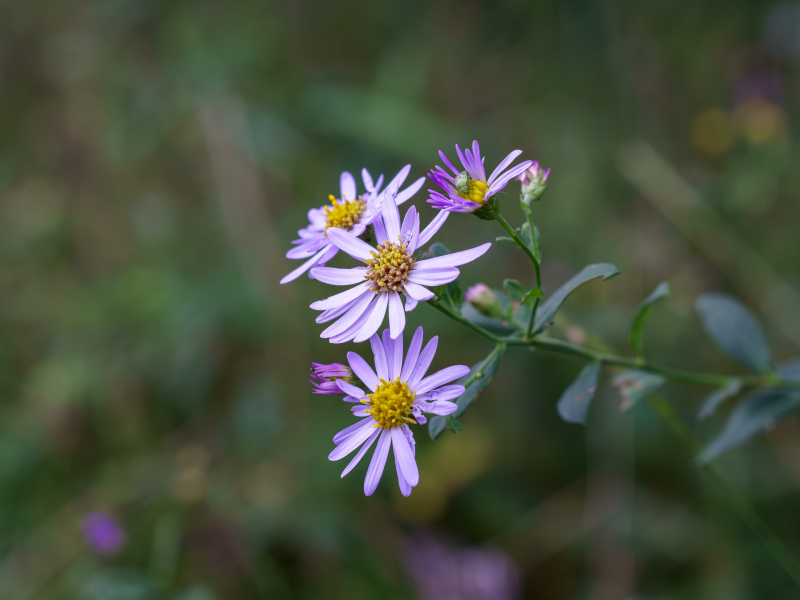
"Nokongiku (ノコンギク)" plants are in bloom. They are a typical wild aster growing on the sunny edges of forests. The name means that they are wild purple asters, but some of them bloom white flowers.
2024.11.05
イシミカワ
イシミカワが果実をつけています。タデ科の一年草で草地などによく見られます。花は緑色であまり目立ちませんが、花の後にがくが発達し、きれいな瑠璃色になります。
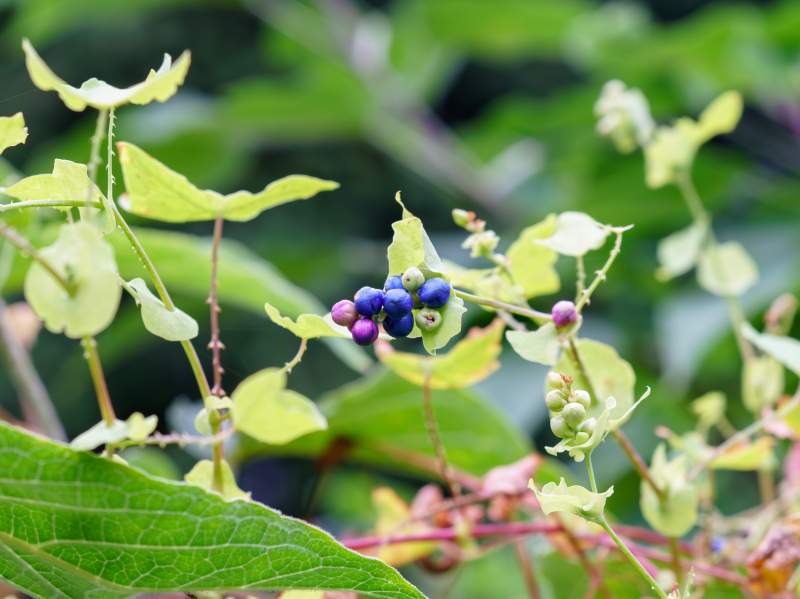
2024.11.01
シロバナキツネノマゴ
シロバナキツネノマゴが咲いています。日当たりのよい道端などに生えるキツネノゴ科の一年草です。キツネノマゴの花はふつう薄紅紫色ですが、その白花品をシロバナキツネノマゴと呼びます。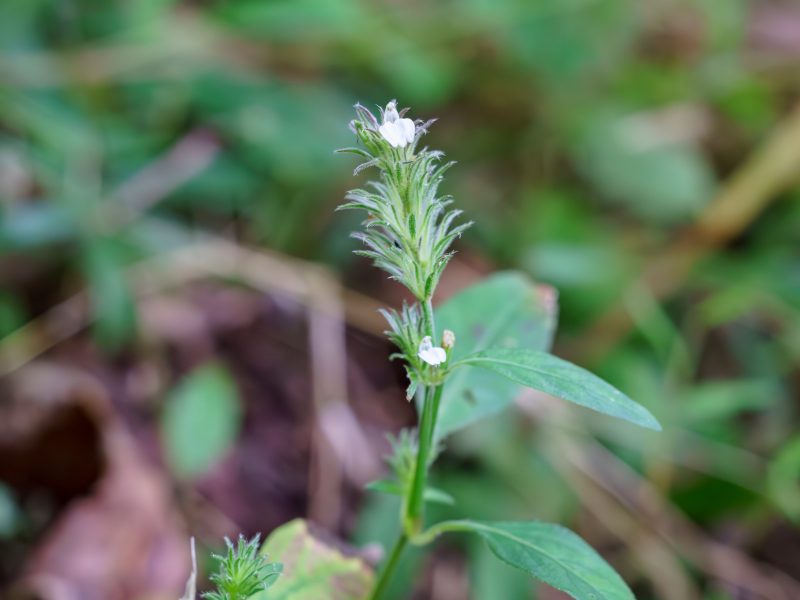
"Shirobana-Kitsunenomago (シロバナキツネノマゴ)" plants are in bloom. They are an annual plant of the Acanthaceae family that grow on sunny road sides. The flowers of Kitsunenomago are normally light red purple, but some of them bloom white flowers and they are called Shirobana-Kitsunenomago.
2024.10.29
ヤブタバコ
ヤブタバコが咲いています。キク科の一年草~越年草で、やや暗い場所でよく見られます。枝はある高さから水平に広がり、枝の下に頭花を並べてつけます。和名は、しわの多い葉が、タバコの葉に似ることに由来します。
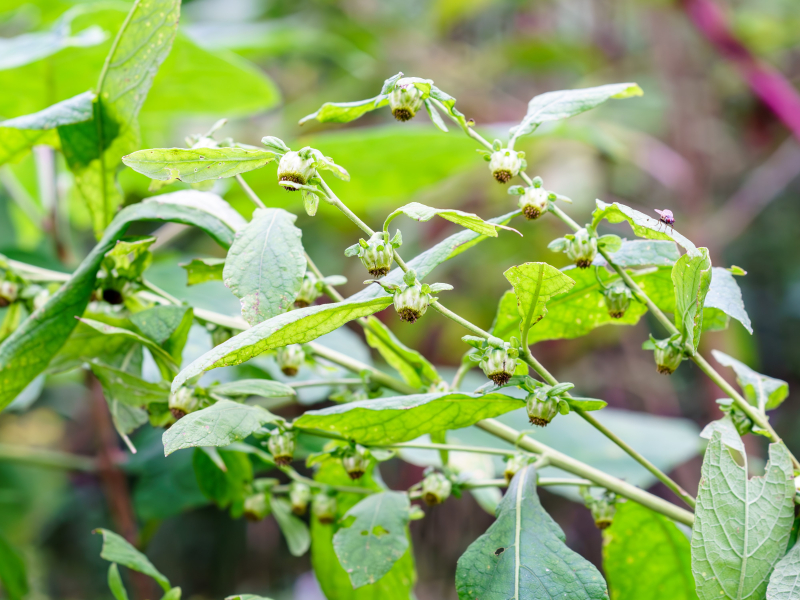
"Yabu-Tabako (ヤブタバコ)" plants are in bloom. They are the annual or biennial plants of the Asteraceae family that grow in a little dark places. The branches horizontally spread from a certain height and they bear head flowers below the branches. The name comes from the fact that their wrinkled leaves look like the ones of "Tabako (タバコ)" plants.
2024.10.25
ノダケ
ノダケが咲いています。林縁に見られるセリ科の多年草です。白い花が多いセリ科では珍しく暗紫色の花が咲きます。古くから生薬として利用されてきたとのことです。和名は、草姿を竹に見立てたものと思われます。
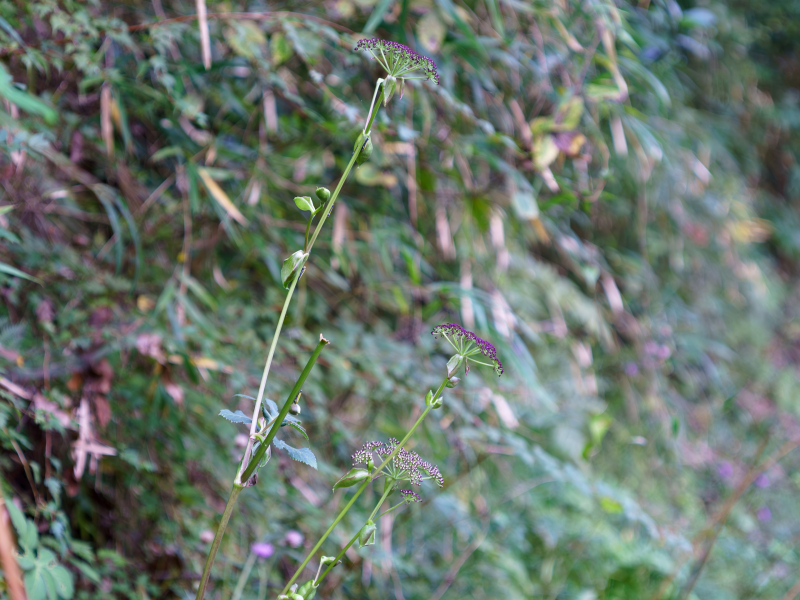
2024.10.22
アオミズ
アオミズが咲いています。湿ったところに生えるイラクサ科の一年草です。ミズの仲間は全体的にみずみずしく、やわらかいという特徴があります。
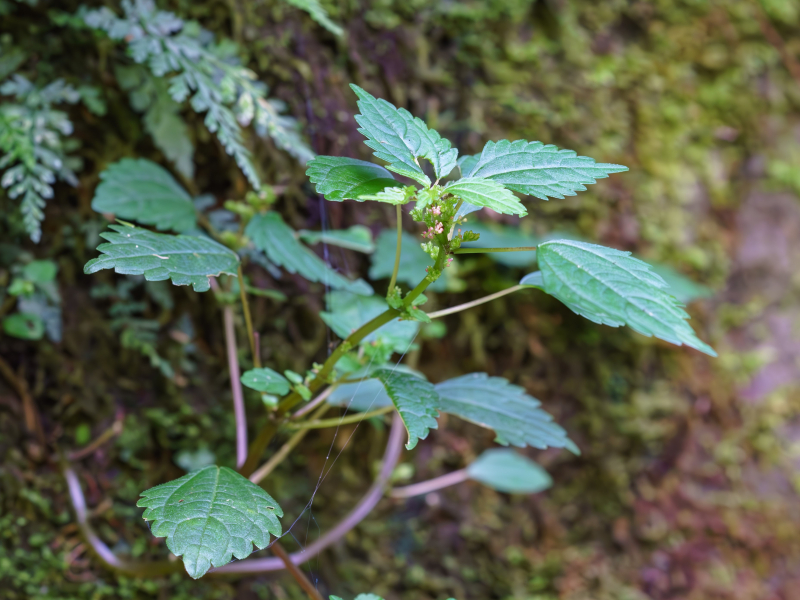
2024.10.18
マツカゼソウ
マツカゼソウが咲いています。林内に見られるミカン科の多年草です。ミカン科の中では珍しく木本ではなく草本ですが、葉には油点があり独特の匂いがあります。和名は、草姿が風に揺れる松の木に見えることに由来します。
